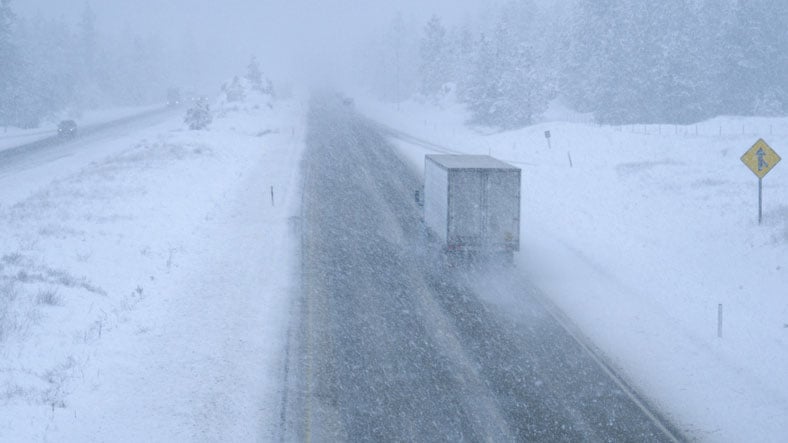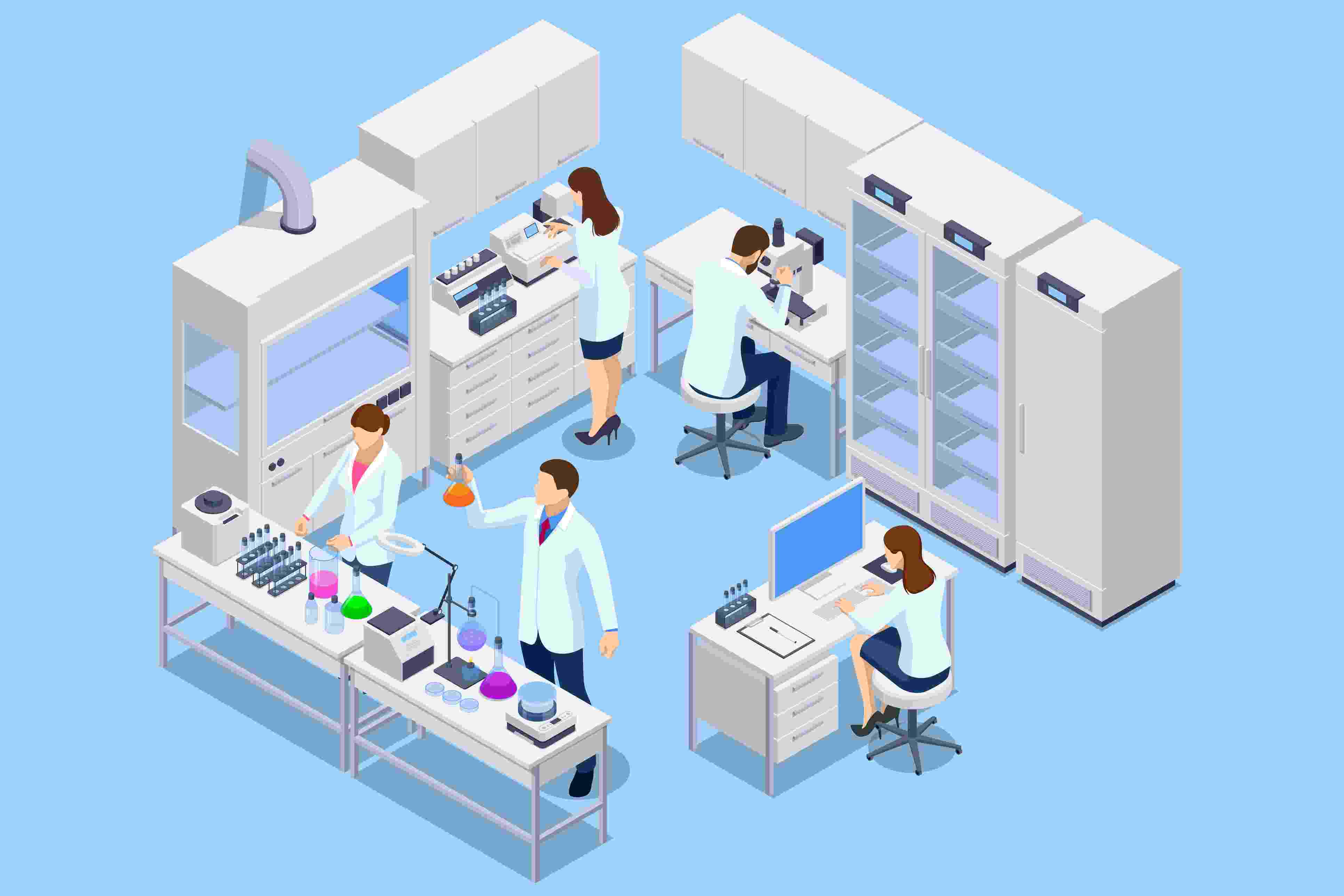Lab Safety: What You Don't Know Can Kill You
The breakthroughs in science that are achieved through lab work are vital and integral in saving lives. Lab work can be very safe, but also potentially dangerous—in the normal course of research and manufacturing, laboratory workers are exposed to dozens of hazards that threaten their health and wellbeing.
The longer technical staff work in a lab, the more accustomed they become to daily routines, procedures, and protocols. While experience and training are crucial for staff members, these things also tend to make workers too comfortable around dangerous chemicals—making them more prone to preventable accidents.
Importance of Lab Work
Across the globe, laboratory staff make great strides toward innovation in key scientific areas. One of these is the medical field—in fact, 70% of medical decisions are made based on results of lab work. This is especially important in healthcare operations, where efficient lab work helps save lives when humans are sick. Laboratory diagnostics tests connect multiple industries—like cancer diagnoses, for example, where the principles of anatomy, chemistry, epidemiology, and more all come into play.
Lab staff also support research and development of new tests, which requires the highest quality and assurance protocols to enable rapid, sample-based decisions. Researchers analyze samples and quickly transfer information worldwide. This includes controlling the quality and safety of food and beverages, building materials, and more. Lab labor upholds the high standards that protect human, animal, and environmental health, across the globe.
The sciences, of course, rely heavily on laboratories as well—as it is here that learning occurs. By constantly pushing for discovery and scientific breakthrough, researchers connect data to real world and market applications.
The world would be a much different place without laboratories and the workers within them. This work brings risk, however—and it is the responsibility of management, lab staff, and anyone who enters the lab to ensure safe operations.
Threats to Lab Safety
Many threats to lab safety exist. From the moment a tech walks into a research, clinical, or manufacturing laboratory setting, hazards are present. The hazardous biological or chemical materials used daily in these labs are innately dangerous—but can also result in events like spills or leaks that create risk inside and outside of the actual lab space.
In any given lab, there will likely be infectious biological agents, toxic chemicals, corrosive liquids, and more. When handled or stored incorrectly, these materials have the potential to harm lab workers—potentially causing burns and illness.
These hazardous materials can also cause secondary, external risks to staff members. Spilled chemicals can result in slips and burns, as well as internal or external allergic reactions. Flammable solvents, if mishandled or stored improperly, can result in damaging fire. Compressed gases or reactive materials may cause explosions. Even the improper storage of empty boxes and waste materials can cause trip hazards, cluttered labs, and blocked evacuation routes.
In fact, over 45% of surveyed lab workers indicate that they have been involved in some sort of a lab accident. This number may actually be higher, however—a recent survey in the scientific journal “Nature” found that up to 32% of lab personnel had been in a lab accident that was not reported to upper management.
These numbers are staggering for many environmental, health, and safety (EHS) professionals and lab managers—as they cannot fix a problem they don’t know about. Luckily, managers can provide guidance regarding lab safety hazards in order to help overcome them—and maintain safe and efficient operations.
Common Unsafe Lab Practices
Let’s consider a hypothetical lab without completed or re-enforced safety precautions in place and analyze the resulting potential hazards that could arise as a result.
Minimal and Infrequent Trainings
Managers in this lab do not prioritize trainings. Even when trainings are needed, managers only suggest them—they are not required to be completed. There is little follow up to verify training completion. When employees do take trainings, the lessons are lackluster and un-engaging; they usually come in the form of non-interactive videos or PowerPoints to scroll through.
Employees sit through trainings passively—without actually learning how to protect themselves and their fellow workers from workplace hazards. Then, after sitting through these sessions, the workers simply ‘check the box’ that training was completed. That is the end of the matter, until a chemical event reveals how inadequate the training actually was.
Non-Compliant Personal Protective Equipment (PPE) Use
Since safety training is inefficient, PPE use is minimal and ineffective—workers are inconsistent when it comes to dressing safely.
A random, ill-fitting, and potentially non-useful lab coat is thrown on whenever the worker remembers to put it on during the day—and it never gets cleaned throughout its lifecycle. On top of this, the lab coat may not be designed for use with the chemicals used in the lab—even if the worker wears the coat, which is far from certain, he or she is still at risk of burn and exposure.
Employees often work both in the field and the lab, so the open-toed shoes, shorts, skirts, dresses, and tank tops they wear in the field are often worn into the lab space as well—exposing the employee to the risk of chemical burns and biological exposure.
Safety glasses are not consistently provided, so workers don’t usually wear them. This leaves their eyes exposed to chemicals and vapors that may get in their eyes. Long hair is not tied up, and sometimes loose strands will interfere with experiment protocols, or fall into appliances or hazardous materials. Finally, lab managers order only one size of glove and fail to communicate a regular changeout schedule. Employees tend to reuse the gloves past their safe lifecycle—risking their skin as well as the integrity of the project.
Poorly Developed Chemical Hygiene Plan (CHP) and Exposure Control Plan (ECP)
In an unsafe lab, CHPs and ECPs are either non-existent or too poorly developed to prevent workers from safely interacting with chemicals and biological agents. Standard operating procedures (SOPs) lack quality supporting information—during incidents, chemicals can’t be identified; in daily operations, workers don’t know how to properly handle chemicals.
Workers don’t organize and store chemicals properly. There are chemicals all over the lab, organized by alphabetical order and not by hazard. Waste is outside the satellite accumulation area (SAA), with no safety data sheets (SDSs) available anywhere.
Additionally, biological safety cabinets are not up to date with yearly certifications—but regardless, chemicals are frequently used outside the fume hood and employees breathe in toxic fumes. Cell lines employees are utilizing are not treated with the care and safety measures necessary to keep them in the lab. Employees never know what is in the lab, how it can affect them, and how to respond in the case of chemical events.
Ineffective Waste Disposal Strategies
Without legally compliant and operationally efficient waste disposal strategies in place, waste is not disposed of properly. Cardboard shipping boxes, old used chemical jugs, and even potentially biologically-contaminated supplies pile up in the lab—causing tripping hazards and taking up valuable lab space. At times, a lack of disposal strategy results in these items being shoved haphazardly into cabinets and overhead storage spaces—eventually, these chemicals may come crashing down on to workers or equipment.
Jugs, strewn about the lab, will eventually leak unused chemical—causing reactions, worker inhalation and/or slip hazards. Workers pour excess chemical down the sink as they don’t have a plan for disposal. This damages pipes and interferes with normal plumbing and wastewater functions. It can also poison surrounding streams, rivers, lakes, and reservoirs—among other long-lasting negative environmental impacts.
Lab Safety Risk Mitigation
Now, we will highlight some ways that a substandard, unsafe lab can be transformed into an exemplary one that prioritizes the overall safety of employees and surrounding communities. To boost lab safety, lab managers should:
Prioritize Trainings
The best type of training is one that fits the schedule and needs of the specific workplace, as well as meets regulatory requirements from start to completion. It is important to find a training that can be done at the employees’ pace—and one that is engaging and informative. During the courses, it is important that lab heads can virtually track what trainings have been completed and by whom. They should also be able to regularly refresh training courses.
Managers should explore all the types of trainings—in person, virtual live, or fully online—and figure out which would work best for their operations. They should thoroughly research the trainings that can be completed independently, and which others are best with a presenter—one who can answer questions and make training engaging, informative, and fun.
Ensure Appropriate PPE Use
Employers should make sure to have a constant supply of all necessary, fully compliant PPE readily available within the lab. They should review the SOPs for each of the lab’s chemical and biological agents and look up safety protocols with regards to PPE.
Lab workers should be trained to know what the PPE requirements are for the projects they are working on, and should be supported when they advocate for what they need when improperly supplied. Managers should ensure that correct PPE is available for each and every type of experiment—proper safety glasses, gloves, and coats will be required if working with hazardous chemicals or infectious agents, for example, but all of this PPE is not necessary if working on a bench with only saline solution.
Constantly Scrutinize CHPs and ECPs
Managers should be constantly reviewing, updating, and closely scrutinizing CHPs and ECPs to ensure information is current. Lab heads should perform a formal yearly review to update plans based on changes to lab operations or additional chemical usage. The risk assessment process and plan updates should always be adjusted and followed before a new process is completed. Management should change practices, plans, and trainings as needed to ensure lab safety.
Create a Comprehensive Waste Management and Disposal Plan
Lab heads should ensure there is a set plan for each of the lab’s waste streams. The first step of this is to perform a waste audit—based on the audit results, the lab team should create a relevant waste storage, transportation, and disposal plan for each waste stream. Chemical SDSs should be referenced to create the disposal plan for each waste, as specifics can vary. Biological agents, for example, require adherence to specific bleaching protocols for disposal; contaminated debris or sharps must be collected in designated containers.
Within each individual plan, the team should list how that waste should be handled and disposed of, from the moment it enters the lab to when it leaves the premises. Cardboard boxes, for example, should have a set area within the building where they can be stored and broken down until the recycling is picked up each week. Plastics should be collected separately and given to a partner who can properly recycle them—not just send them to the landfill. Thorough plans prevent haphazard waste storage and result in nothing needing to be washed down the drain.
Your Journey to Lab Safety
While lab work has the potential to be unsafe, managers can organize labs to support safe, correct operations—all while removing scientist safety risks and containing relevant lab hazards. Process improvements and due diligence can help the lab team create a culture of lab safety, together.
Interested in increasing lab safety across your operations? Contact Triumvirate Environmental. Our team of experts can make sure you stay safe—without compromising research integrity.






